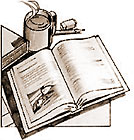
Atlas F1 Columnist
BEYOND THE LIMITBy Professor Sid Watkins.
Published by Macmillan.
If Sid Watkins had retired from his position as Grand Prix racing's chief stethoscope-wielder a few years ago, he would almost certainly be making a very tidy living doing the public speaking circuit. Watkins has been around a long time, has amassed a great stock of anecdotes, and he knows how to tell them. If I were to arrange a dinner party for a dozen current Formula One personalities, I'd probably want him to be there.
Watkins's first book, Life at the Limit, came out about four years ago; one of the last of many titles to emerge, at least in part, from Senna's death at Imola in 1994. The book was roundly praised, and rightly so – few observers, including the journalists that routinely pump out 'behind the scenes' exposes, are as close to the sport and the pivotal figures within it as Watkins, and the special nature of his relationship with the drivers, significant team figures, and His Bernie-ness allows The Prof to reveal a different side of those around him to that which is normally presented.
Having read the new volume, though, it seems that Watkins used up all his good material the first time round. According to the dust jacket, the book tells the reader about the changes that have taken place in the sport since the release of Life at the Limit. Watkins himself elaborates in the introduction.
In other words, it's kind of like a variety show. The basic problem is that not enough seems to have happened between 1994 and 2000 to warrant a new book of this kind. The changes that emerged out of Senna's accident were indeed wide-ranging and changed the nature of the sport as we know it. Nothing of anything approaching the same magnitude has happened since, and it shows – the section covering the changes is exactly 14 pages long. Which leaves a lot of space to fill, and consequently, a lot of unnecessary filler.
Part Two of the book - 'The Millennium Season' - contains the odd amusing anecdote, and the descriptions of the various medical facilities is mildly interesting. Having just seen something similar happen at a race meeting I was covering last weekend, I got a bit of a laugh out of Watkins's account of the medical car's trip into the wall at the chicane. But another blow-by-blow account of the 2000 season, though, is the last thing anybody needs. We all saw it, we all know what happened.
The descriptions of the drivers are, sadly, far less interesting than you would probably expect. Again, Watkins seems to have used up his best stuff in the first book, leaving the sequel with a mish-mash of occasional gems scattered through a lot of waffle. Watkins wears his heart on his sleeve, which I also found a bit irritating, particularly when it came to things like the Prof's description of Damon Hill's win at Spa in 1998 as 'stunning', when he was being shadowed by a quicker teammate who was under orders to hold station.
The one aspect of the book that could potentially be of real interest are the appendices, which contains all sorts of information that could possibly be of use if you can understand all the spooky medical terms. Again though, much of the information has been published elsewhere, and if you have some kind of passion for the safety aspects of F1 then it's unlikely that you'll find much that you haven't already seen.
At the end of the day, this is not so much a bad book as an unnecessary one. It talks about a lot of things without actually saying much, and while there is some interesting information scattered around, there is a lot of other stuff you have to wade through to find it. Better books have been written about safety (Life at the Limit, or David Tremayne's Science of Safety), and better books have been written about the personalities close to the sport (Eoin Young's 'It Beats Working', Nigel Roebuck's 'Chasing the Title', or Denis Jenkinson's 'Passion for Motorsport.') which, at the end of the day, renders 'Beyond the Limit' largely redundant.
"This new book relates the significant incidents between 1994 and 2000. There is also a race-by-race account of the millennium season, with some memories of my own life at the circuits and my views of some of the current F1 drivers. Finally, there are some happy memories of some of F1's golden oldies." (p. 2).
Please Contact Us for permission to republish this or any other material from Atlas F1.
|
Volume 7, Issue 37
Italian GP Preview
The Italian GP Preview
Technical Preview: Monza
Focus: Lauda in Italy
Columns
Elsewhere in Racing
The Debut Trivia Quiz
Bookworm Critique
The Weekly Grapevine
> Homepage |

